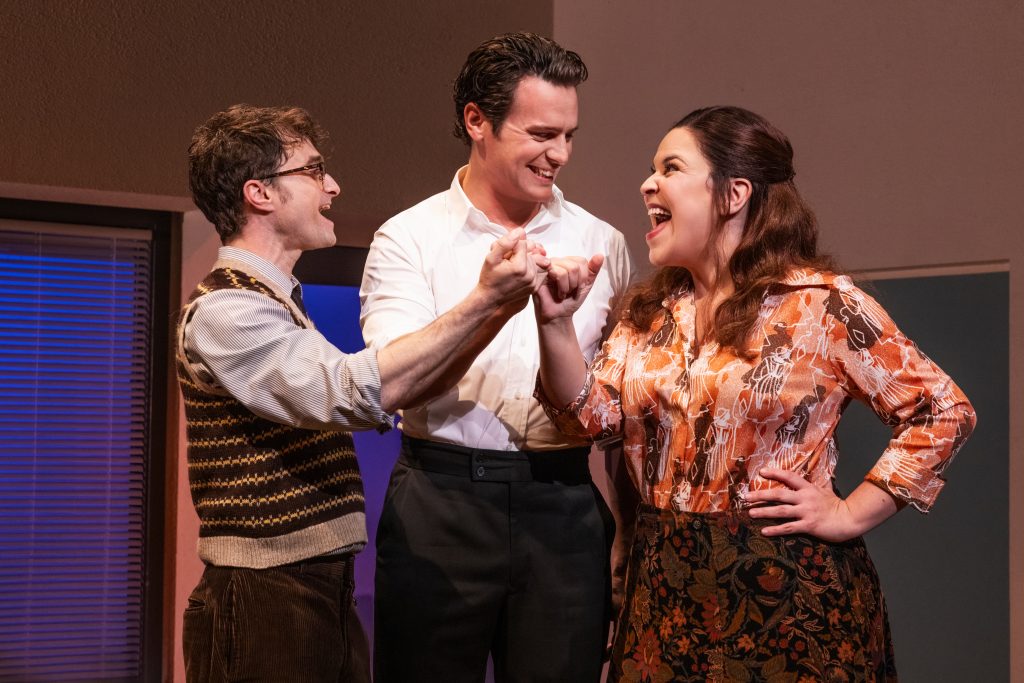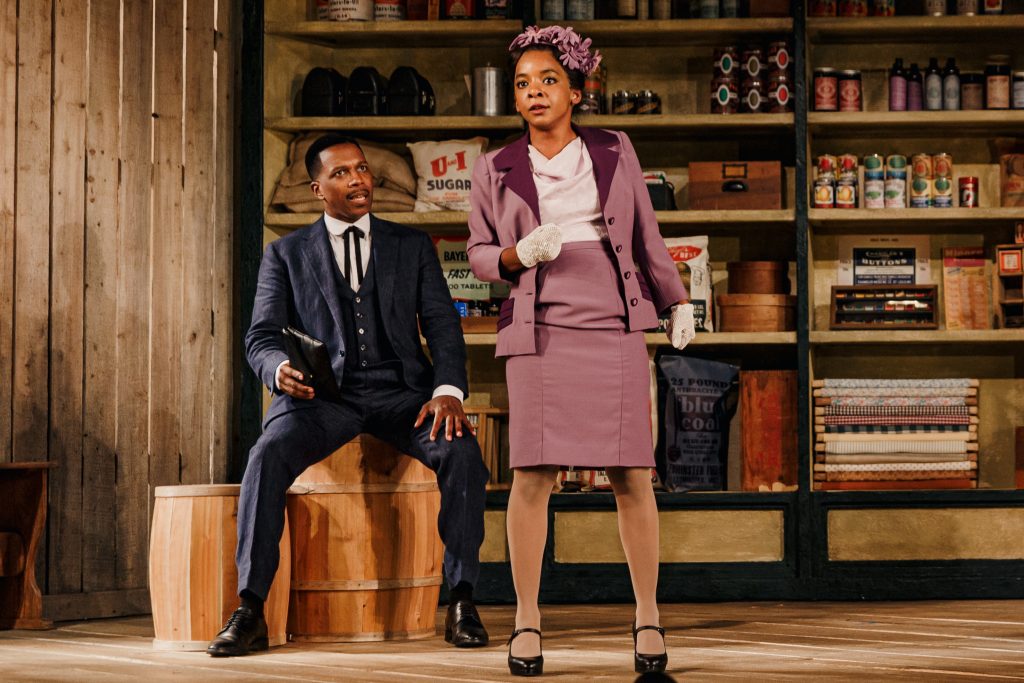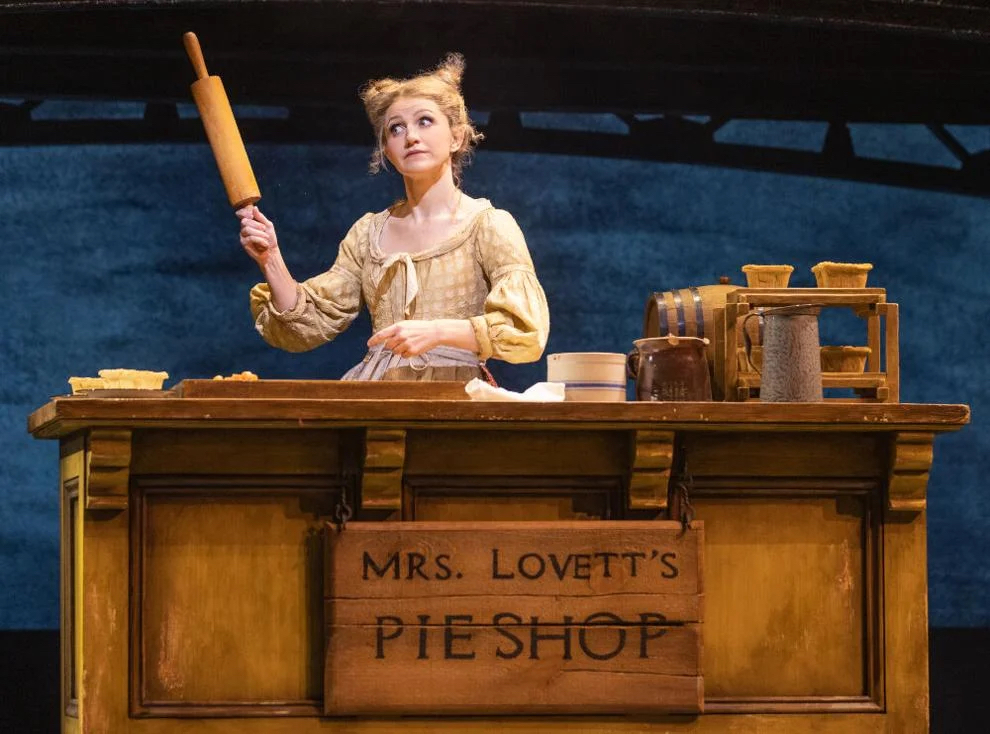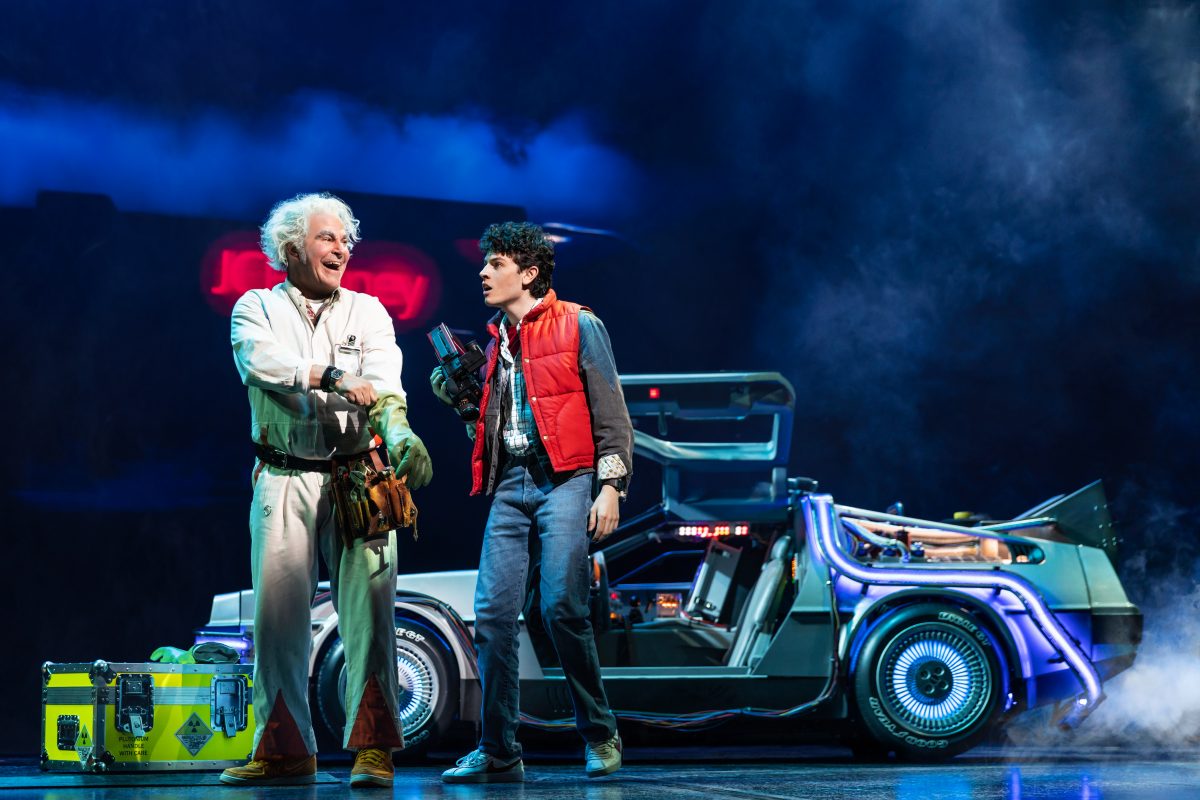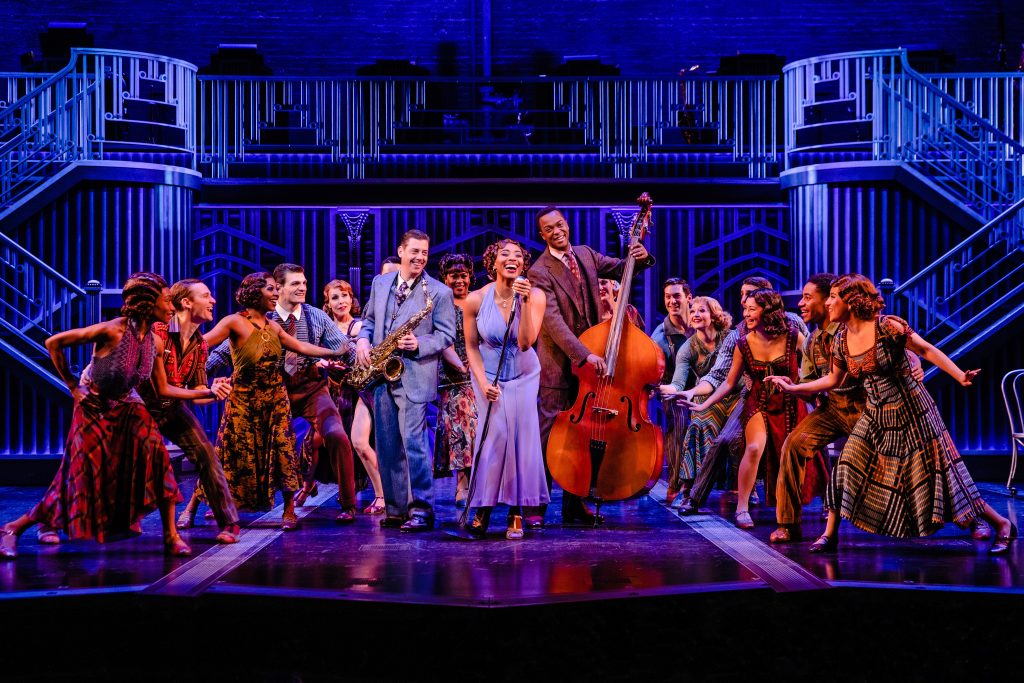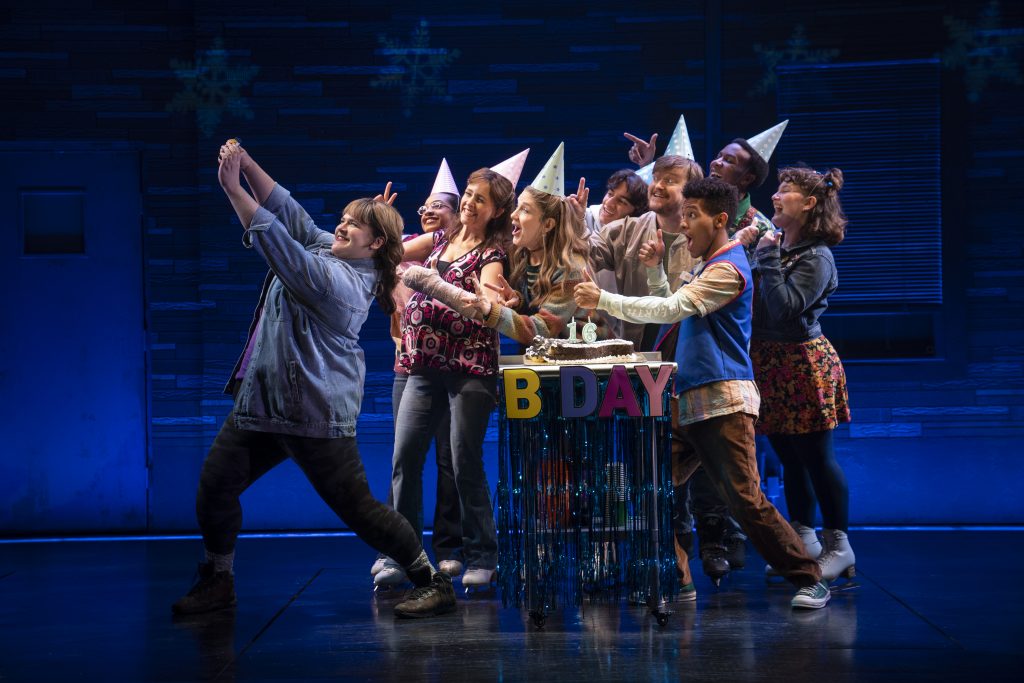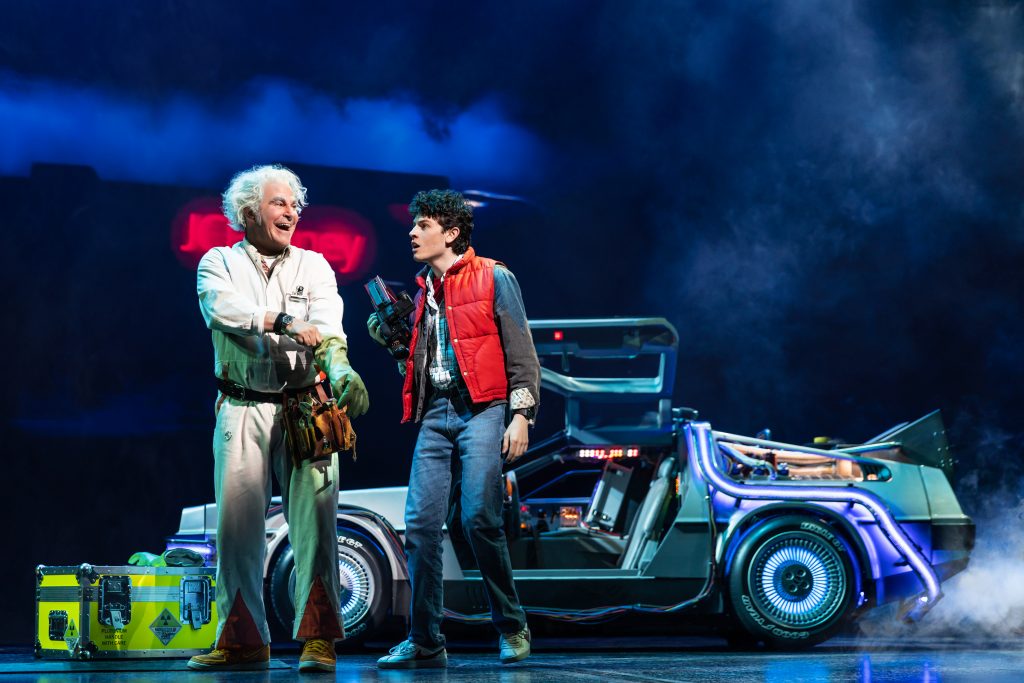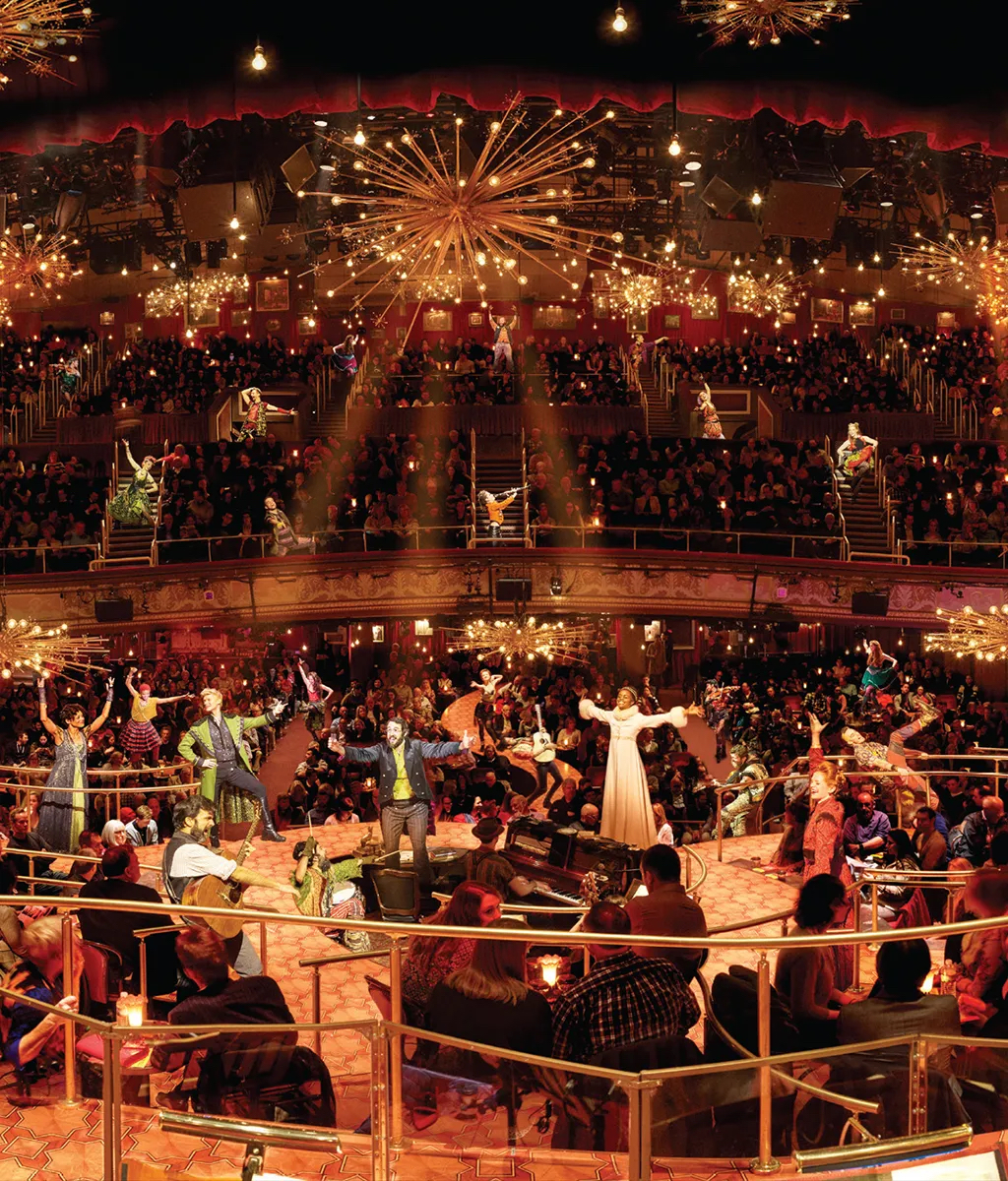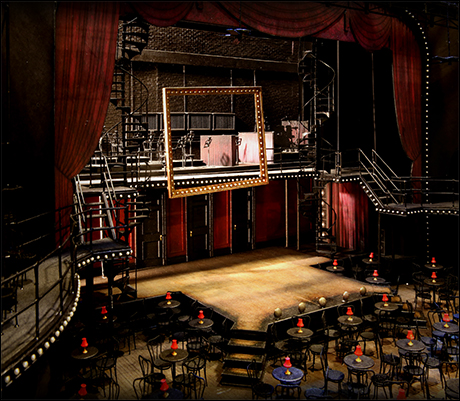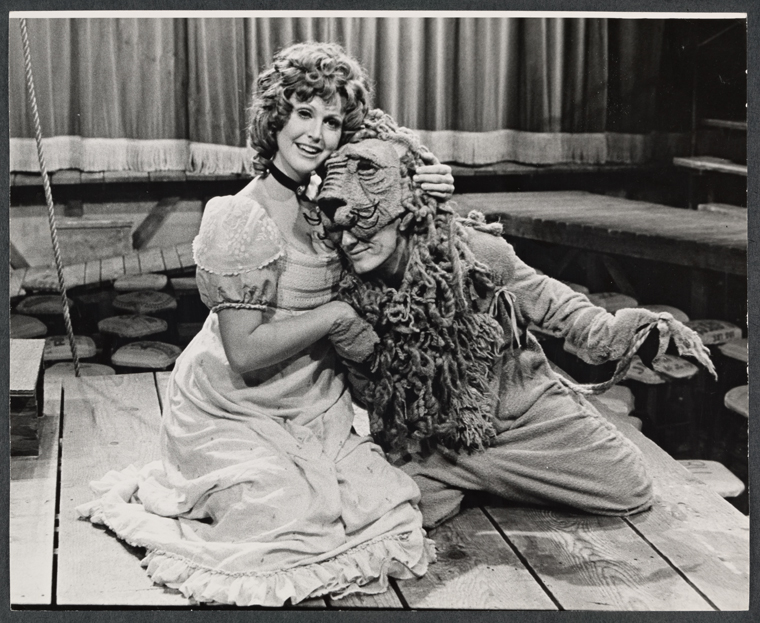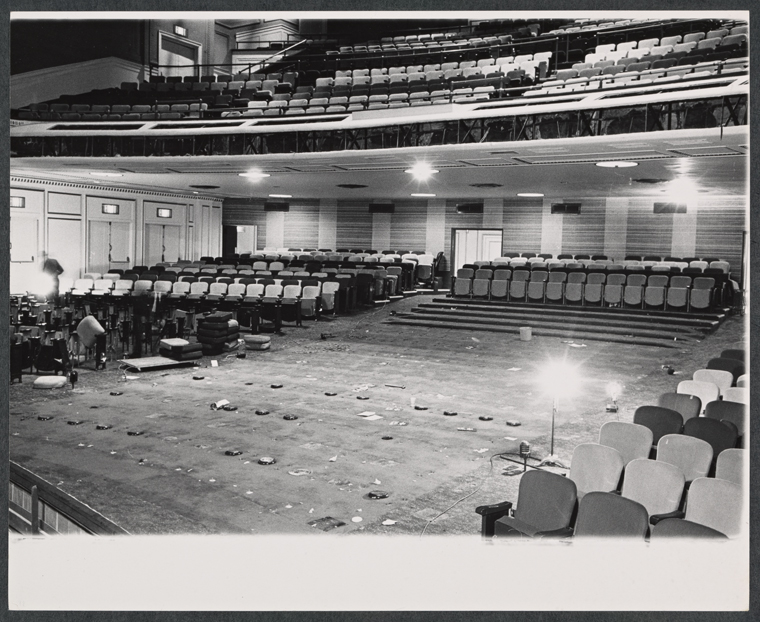Sponsored post
Q&A with Patrick Olson of Emergence
By Broadway’s Best Shows Staff
The new show Emergence, now running at the Pershing Square Signature Center, knows it’s hard to describe – is it a musical? A concert? A scientific exploration? An acid trip? It’s a little bit of everything. In this interview with lead performer and composer Patrick Olson, we explore the creative process behind this idiosyncratic event, that’s a little bit David Byrne, a little bit Carl Sagan, and even a little bit Woodstock.
This interview has been edited and condensed for clarity.
Broadway’s Best Shows
Why write songs about huge philosophical questions?
Patrick Olson
You know, it may be less of a choice than just a simple response to how my mind is evolving, as I get older. I’ve tended to find that over time, whatever songs I’m writing at a given point in my life are reflective of the thought space that I carry around in that time. And maybe that’s not so surprising! I really think about these big questions, I really think about the implications of scientific insight. I really think about what it means to be human in a rapidly changing environment that we’re all in. And since I think about those things all the time, I think it’s natural that the music would reflect that.
BBS
Tell us about the songwriting process. I mean, it’s the cliche question, which comes first, the music or the lyrics, but…
PO
I normally start with just a baseline, and try to find some bass groove that feels right to me, and evokes some kind of specific emotion. The rhythm section of drums and bass constitute the spine of any song, so I like to start with the spine. And once that feels like it’s in a certain kind of pocket, then I just start noodling around the edges of that. Typically, the next thing [is] a basic portal structure that I would do on an acoustic piano, and figure out what kind of chord progressions feel right in relation to that baseline and those drums, and what sort of harmonic harmonic dimensions will come out of that. Lastly, I start to experiment with vocal ideas, which constitute the melody of any given song.
Once all of that is in place, then I really like to give the music a week or two, to breathe on its own and develop its own sense of character. And so when writing lyrics and the song, the structure of the song, the tone of the song, the qualities that the instrumentals offer, they really shape what the emotional context of the lyrics is going to be in. Then it’s just a matter of linking that to whatever ideas seem to fit the best. And usually, there are scientific insights of one kind or another, and the song kind of comes together at that point.
BBS
How and why did your album Music for Scientists become a work of theater that’s now running at the Pershing Square Signature Center? That’s a really unusual journey.
PO
Yeah! Writing and recording and producing that album was immense, fun, and really interesting. We really didn’t cut any corners. You know, we had a full orchestra that we recorded in Nashville. And this was during COVID, too, so that represented all of its own challenges, but we had I think a 50, 60, 70 piece orchestra with it. All of the songs on that album constitute the fertile soil that the next stage would grow out of. We really only used one song from that album, in the show Emergence, and that was “Moons of Jupiter.” I wrote nine new songs to constitute the show. But that album laid out the DNA for what the following songs would be and how they might constitute a different kind of experience, not just an isolated sonic experience, but a visual experience and a community experience of that theatrical experience.
BBS
That leads really nicely into my next question– what is the sort of emotional experience you’re hoping to create for your audience?
PO
I would really love for people to just be plainly entertained, in the most superficial way. [And] I would hope people would experience some emotional movement. For them to be touched, or for them to have the music and the stage-theatrical experience, evoke an emotion from them.
I’m really, really happy to report that, we go out into the lobby after every show and greet everyone as they’re leaving, and every single night, I get to hear people say [those] things: they feel it was so entertaining, and the show was really tight, and the choreo was great. And everything just kept moving, and they didn’t know what to expect next. And that there were periods of time in the show where people tell me they were really moved to tears. And it was just really beautiful.
People tell me pretty regularly, “I never thought of this in that way. And I don’t think I’ll ever think of it the old way again. Now I see the world in this way.” So it’s not just my intention, but I really have the privilege of being able to have face to face contact with people as they’re leaving the theater. And they tell me [that] happens. And it’s wonderful!
BBS
And you give them a tulip, which is also lovely. (Audience members are handed a tulip as they leave the theater.)
PO
They get a tulip as well! Which is sort of an emblem of the show in many ways. It’s referenced in the show and has scientific meaning as well as, you know, just kind of a nice little practical thing to give people to memorialize the experience.
BBS
So what do you see as the importance of an artist, such as yourself, communicating science? Why is that important to you? Why does that matter?
PO
It’s really fascinating because the word ‘science’ is loaded. It can mean so many different things to so many other people, you can say the word ‘science’ to someone on the street and who knows how they might react to that – it might be they have a sense of dread about physics exams that they had during college, or they feel like it’s really ‘mathy’ and something far away from them. Or it’s inscrutable, [like] “science is all about test tubes, and formulas and things I don’t understand.”
I don’t think of science as any of that stuff. I think of science as the insight, the understanding into the nature of the universe. That’s what I care about. The scientific method and good research methodology lead to solid insights, but it’s the insights that I care about. And so when I think about science, what I think about is reality. That is our best human understanding of the nature of things. And science happens to be the most reliable tool for getting at that thing, but it’s that thing that I care about.
BBS
An element of the show that was really unique was Jordan Noltner’s lighting design. It had a sort of rock concert feel that I so rarely see onstage. And so I’d love to know how that unique visual was created.
PO
There’s no question Jordan Noltner is a gifted lighting designer. It has to do with the DNA of the show… a big part of what we are is a musical concert, and any rock concert that you would go to for any popular musician, they have extensive and dramatic lighting, and we felt that that would be fitting for what we’re doing here as well.
BBS
So you come from the music world. How is the theater schedule treating you? What’s your routine to do this show? Because this is a big sing.
PO
Yeah, you know what I didn’t realize? Last night we finished our 62nd or 63rd show. And since a run of this length is very new to me, I did not understand just how taxing it is physically. I find I live a pretty quiet life outside of the show. And that’s necessary for me to summon all of the energy and explosive stuff that happens in the show. And then I go back home and recover and continue with my quiet life. So it does take a lot of sustained energy–I was surprised by how physically taxing a theatrical run like this is! But it is at the same time the most inspiring and most fun thing I think I’ve ever done in my life. So I will take the exertion, I’ll take all the beatings that come down the pipe, and I’ll keep doing this as long as we’re able to, because it is so exciting. And mostly it’s just about having contact with the audience after the show, when they can speak to me about their experience and that, more than anything else, just recharges my batteries for the next show.


